Physical Address
304 North Cardinal St.
Dorchester Center, MA 02124
Physical Address
304 North Cardinal St.
Dorchester Center, MA 02124
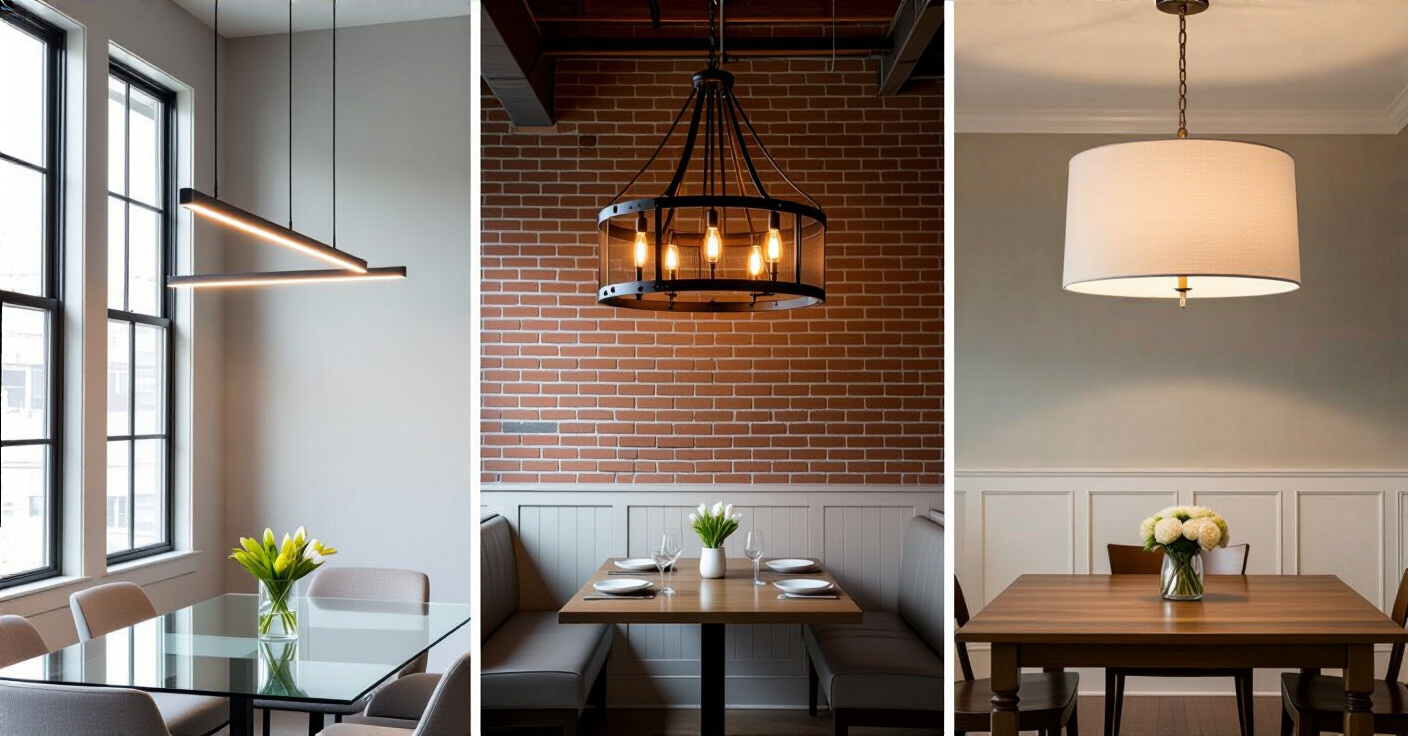
Transform your dining room into a hub for reading, dining, and connection. Marcus shares 18 thoughtful lighting ideas for a beautiful and truly functional space.
You know what people always ask me? It’s not about the great libraries of Alexandria or the proper way to catalog a personal collection. It’s far more practical. They’ll show me their dining room and ask, “Marcus, what do I do with this? It’s where we eat, sure, but it’s also where the kids do their homework, where I spread out my research, where my book club meets. It needs to be more than just… a place with a chandelier.”
And that’s the heart of it. A dining room is rarely just for dining anymore. It’s the modern scriptorium, the family’s intellectual and social hub. Most lighting advice treats it like a static museum display, focusing only on that one perfect dinner party. That’s noise. What actually matters is creating a space that can transform—from a bright, focused study hall to a warm, intimate haven for conversation. It’s about lighting not just the table, but the lives that unfold around it.
Before you even think about a fixture, we need to talk philosophy. I know, it sounds grand, but all great libraries begin with an organizing principle. This is about defining what you need the space to do and feel like. Get this part right, and the rest becomes infinitely simpler. It’s the difference between buying a light and truly illuminating a room.
People think “contemporary” is one single look. It’s not. It’s a category, just like “fiction.” Is your story a stark, minimalist novella? An industrial piece of historical fiction? Or a transitional work that blends old traditions with new ideas? Your lighting must be a character in that story, not a random bystander. The corporate advice tells you to pick from a list of styles. I say, look at the room as a reflection of your own intellectual life.
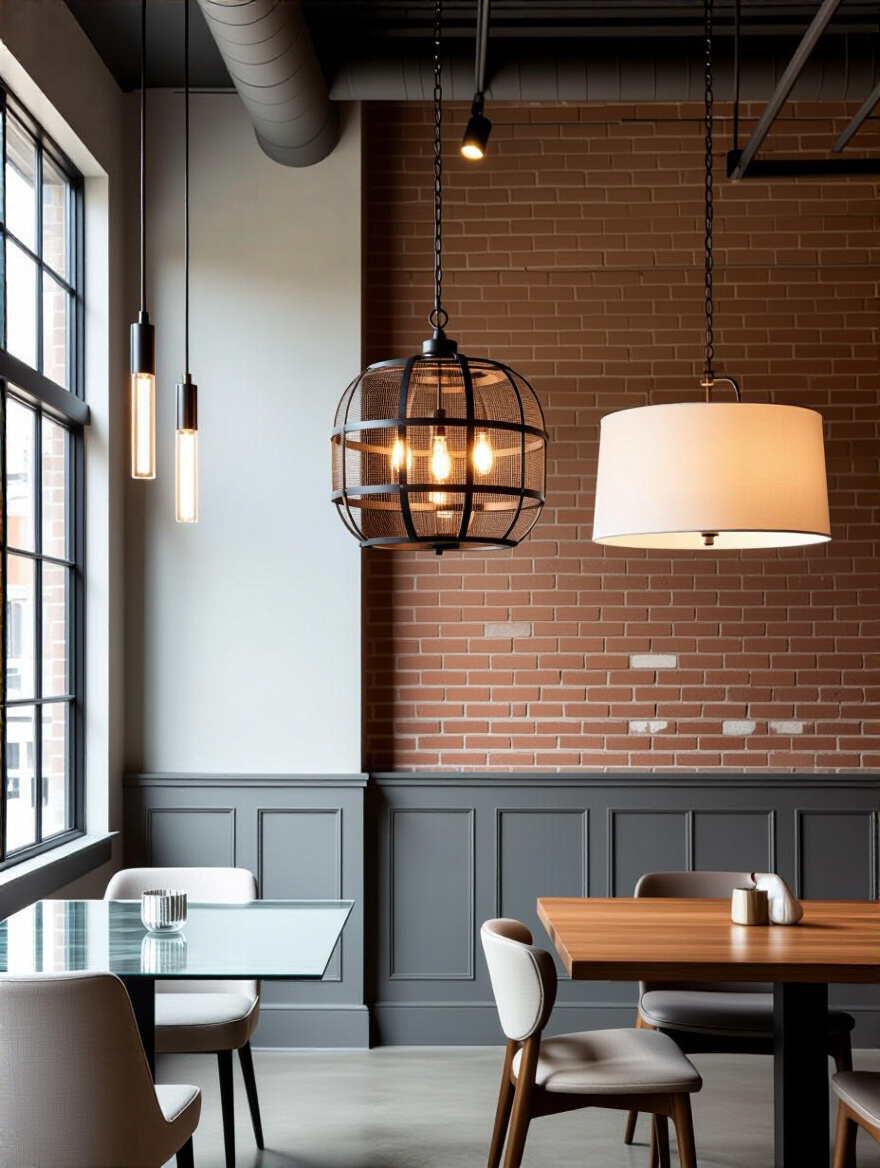
A minimalist room with clean lines isn’t about emptiness; it’s about clarity of thought. The light should be precise and unobtrusive. An industrial space with brick and metal is a workshop for ideas; its lighting should feel honest and functional. The real trick is to stop thinking about decorating and start thinking about curating. Echo a material or a finish. If your chairs have black metal legs, a matte black fixture creates a dialogue. It tells a cohesive story.
Now, with that story in mind, let’s talk about the ink you’ll write it with: brightness.
Can we just address the absolute BS of a single “ideal brightness”? The light you need for parsing the fine print in a historical text is utterly different from the glow required for a confidential conversation over a bottle of wine. A common mistake is lighting a room for one function, which is like owning only one book. You need a library of light. Your goal isn’t brightness; it’s control.
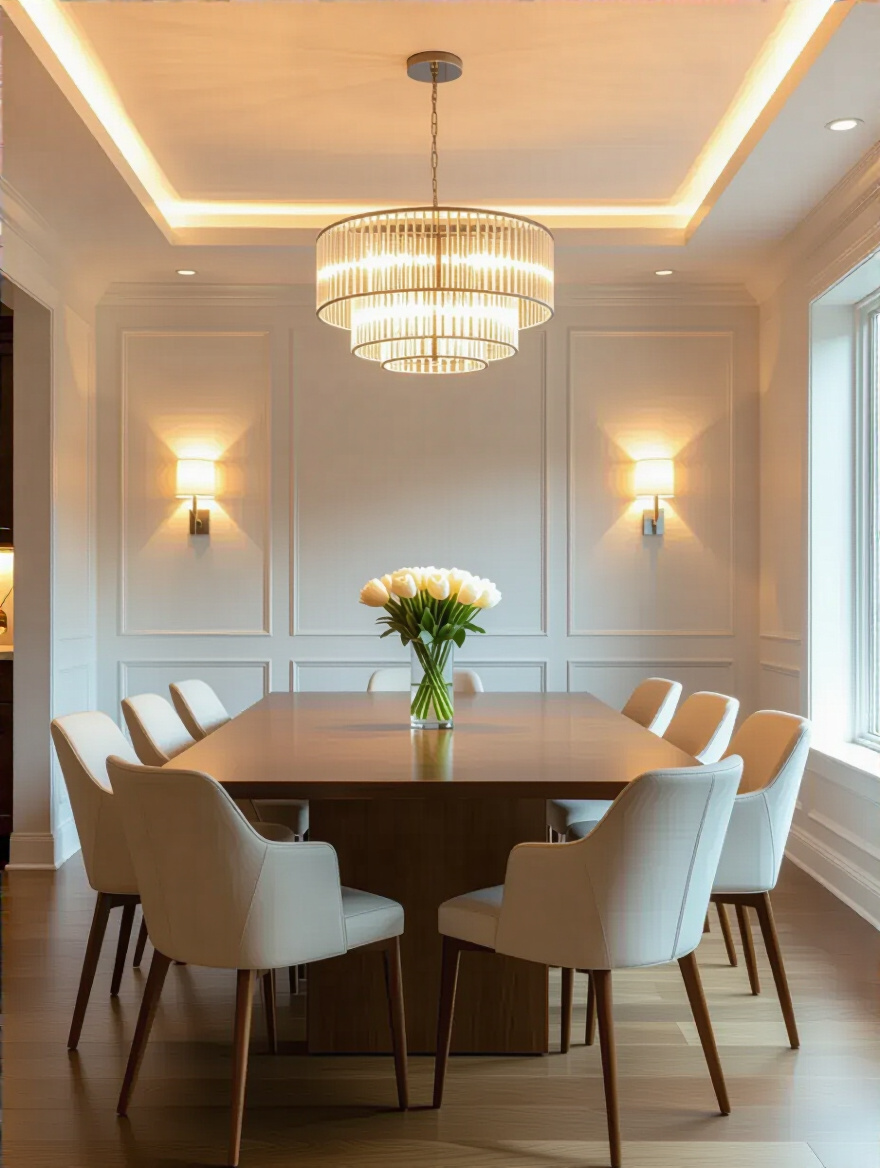
Instead of getting lost in lumens and lux right away, list the room’s functions: reading, writing, board games, intimate dinners, lively debates. Now you see the problem. You need layers. This is the shortcut I wish I’d known earlier: Design for the brightest possible need (like homework or crafting) with your task lighting, and then make sure everything is on a dimmer. That dimmer is the single most important tool for creating a functional, multi-purpose space.
With the “how bright” question reframed as “how versatile,” let’s ensure the light actually fits the stage.
I once visited a client whose beautiful, seven-foot oak table—the heart of their homeschooling and family life—was dwarfed by a tiny, sad-looking pendant light. It was like putting a teacup in the middle of a grand stage. Scale isn’t just a design rule; it’s about respect for the main character in the room: the table where all the work and life happens. Getting this wrong makes everything else feel off.
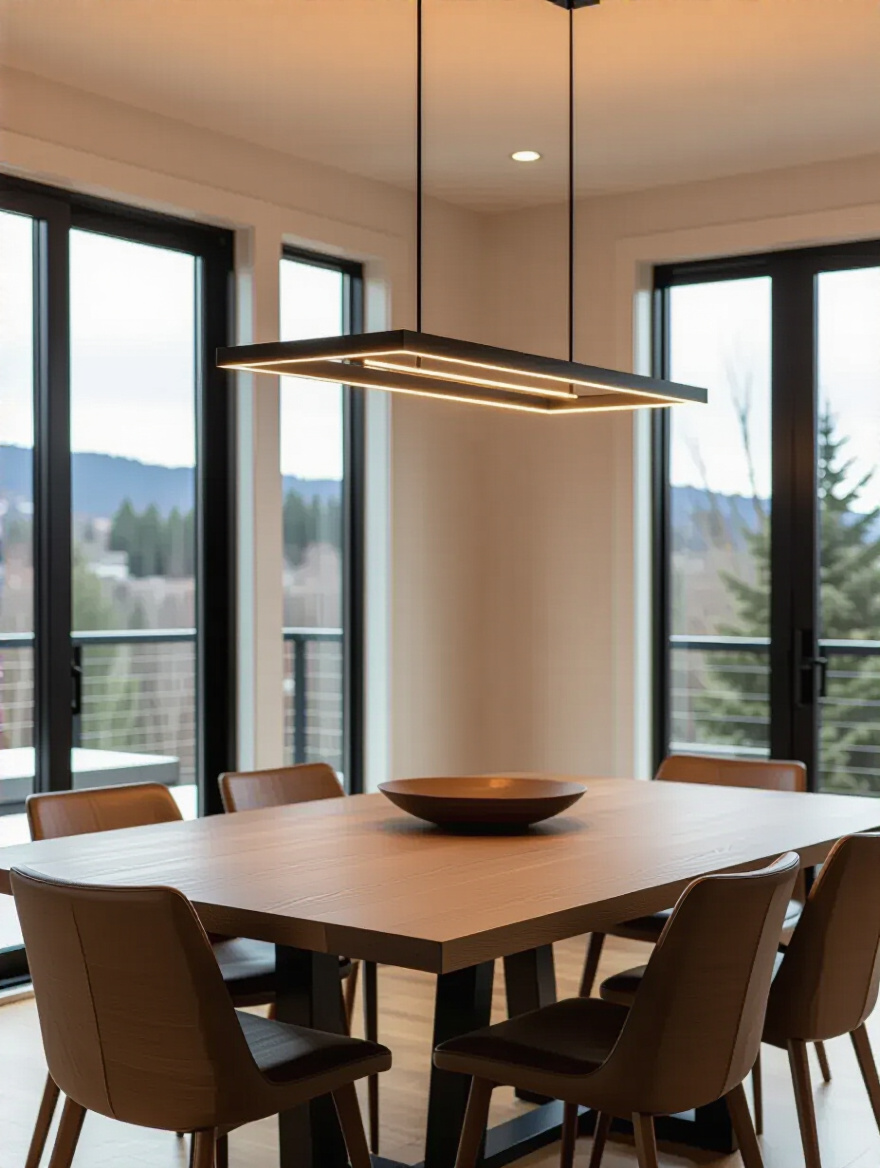
Here’s the simple, no-nonsense rule: your light fixture should be a companion to the table, not a stranger. For a long table, the fixture should be about 2/3 of its length. For a round table, about 1/2 to 2/3 of its diameter. This ensures the light actually covers the surface where the books and plates are. Before you buy, mock it up. Seriously. Cut out a piece of cardboard or tape some balloons together to the fixture’s dimensions and hang it from the ceiling. It feels silly for two minutes and saves you a world of regret.
Once you have the right width, we need to get the height just right.
A light fixture hung too high feels aloof and fails at its job, casting a weak, general light. Too low, and it becomes a bully, glaring in your eyes and blocking conversation. The standard rule is 30-36 inches above the tabletop. But what’s more important is the feeling. Your primary light source over the table should create an intimate world, a pool of light that says, “This is our space.” It’s the modern equivalent of leaning in over candlelight.
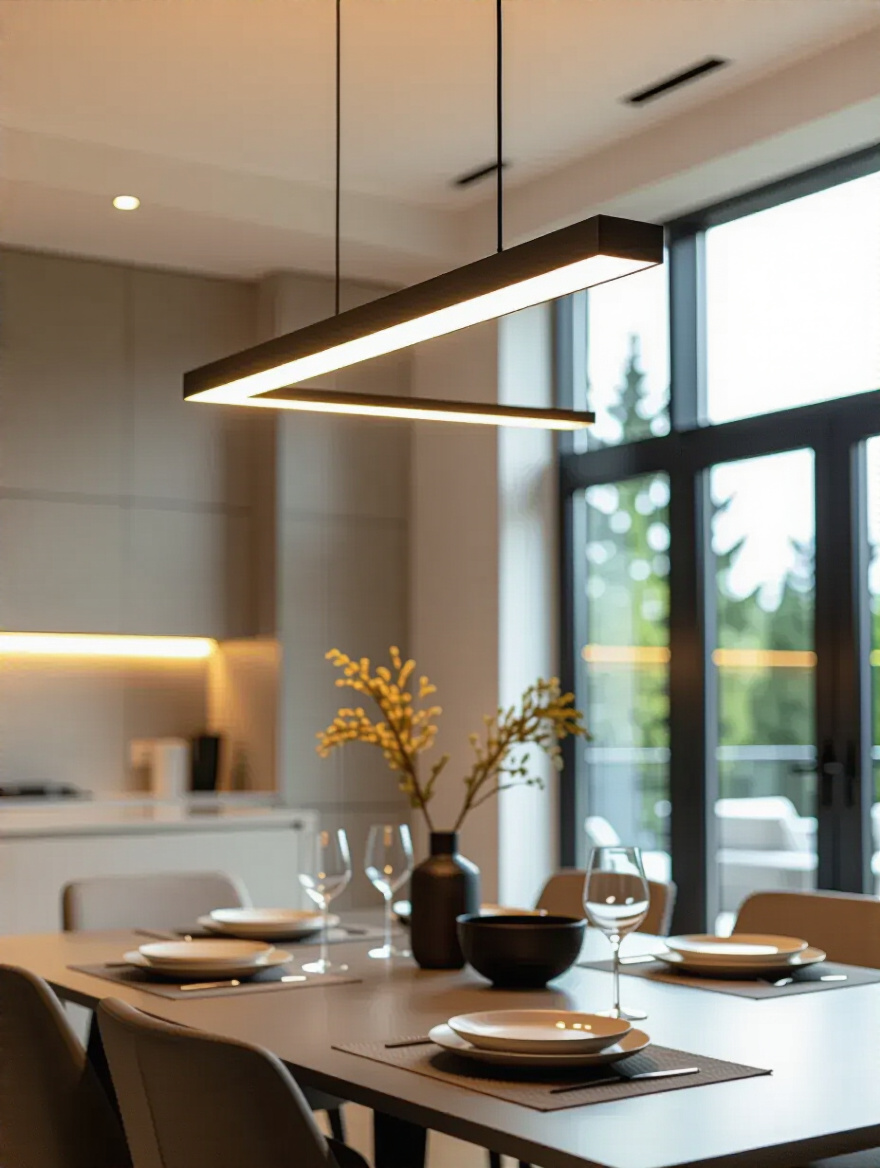
Think of the great reading rooms, like the one at the New York Public Library. Massive, soaring ceilings, yes, but on the tables, you have iconic green lamps that bring the light down to a human, intimate scale. That’s the principle. The higher your ceiling, the more visually substantial your fixture can be, and you can add an extra 3 inches of height for every foot of ceiling over 8 feet. But always, the goal is to define the space around the table.
Now, what color should that intimate world be?
Let’s be honest, nobody talks in Kelvins. So let’s put it this way: light has a mood. Think of the warm, amber glow of a fire or an old library with leather-bound books—that’s around 2700K. It’s calming, cozy, and fantastic for conversation. Now think of the clean, neutral light of an art gallery or a modern study space—that’s closer to 3500-4000K. It’s energizing and great for focused tasks. Using the wrong one is like trying to read a textbook in a dimly lit jazz club.
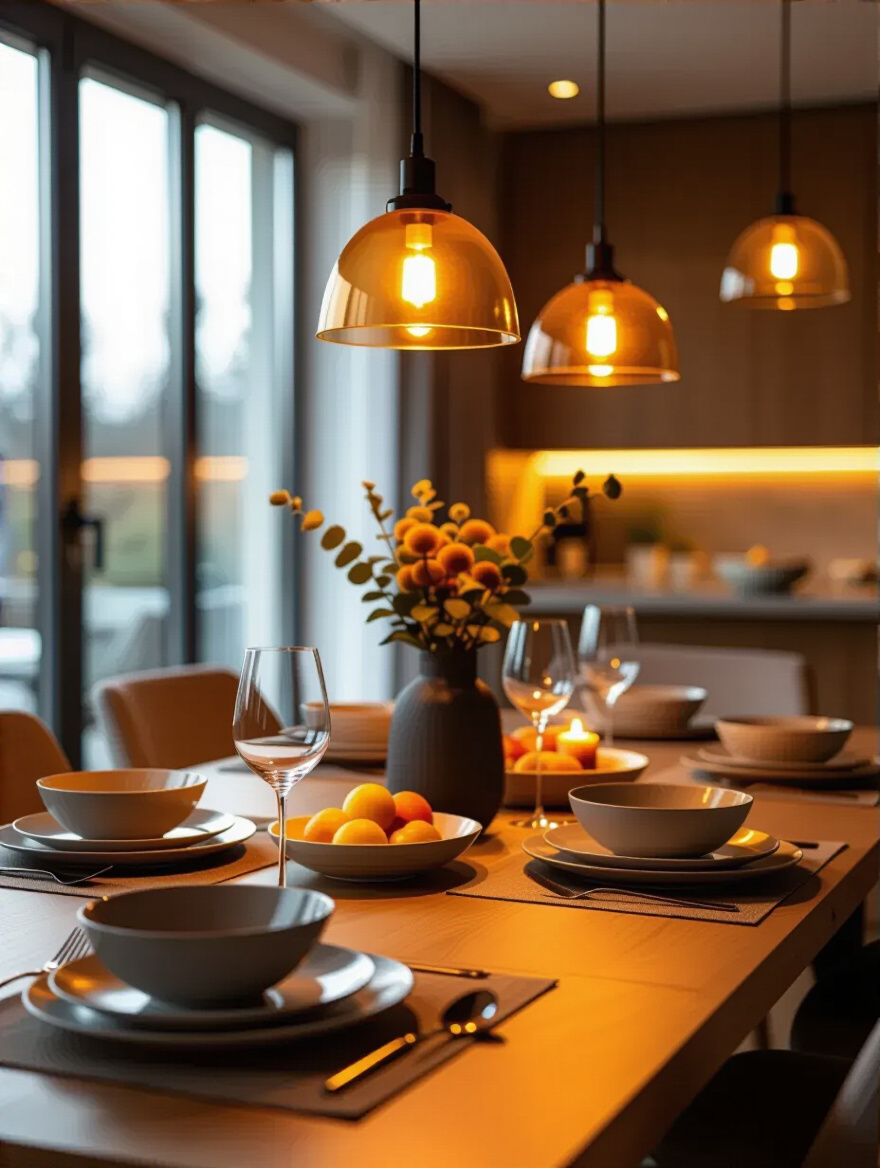
For a space that serves every function, this is crucial. A warm, golden light (2700K) is beautiful for dining, but it can make you feel sleepy when you’re trying to read or work. This is why my ultimate shortcut recommendation is to invest in “tunable white” smart bulbs. They let you change the color temperature with an app. You can have crisp, focused light for homework at 4 p.m., and a warm, welcoming glow for dinner at 7 p.m., all from the same fixture. It’s the greatest innovation for multi-use spaces.
Alright, with our philosophy and planning in place, we can finally talk about the fun part: the fixtures themselves. These aren’t just light-holders. They are sculptural elements, the punctuation marks of your room’s story.
For the long, rectangular tables that are the command centers of so many homes, a linear chandelier is less a trend and more a logical conclusion. It’s the modern heir to the long lighting hoods you see over tables in university libraries. It distributes light evenly across the entire work surface, meaning no one is left in the dark at the end of the table.
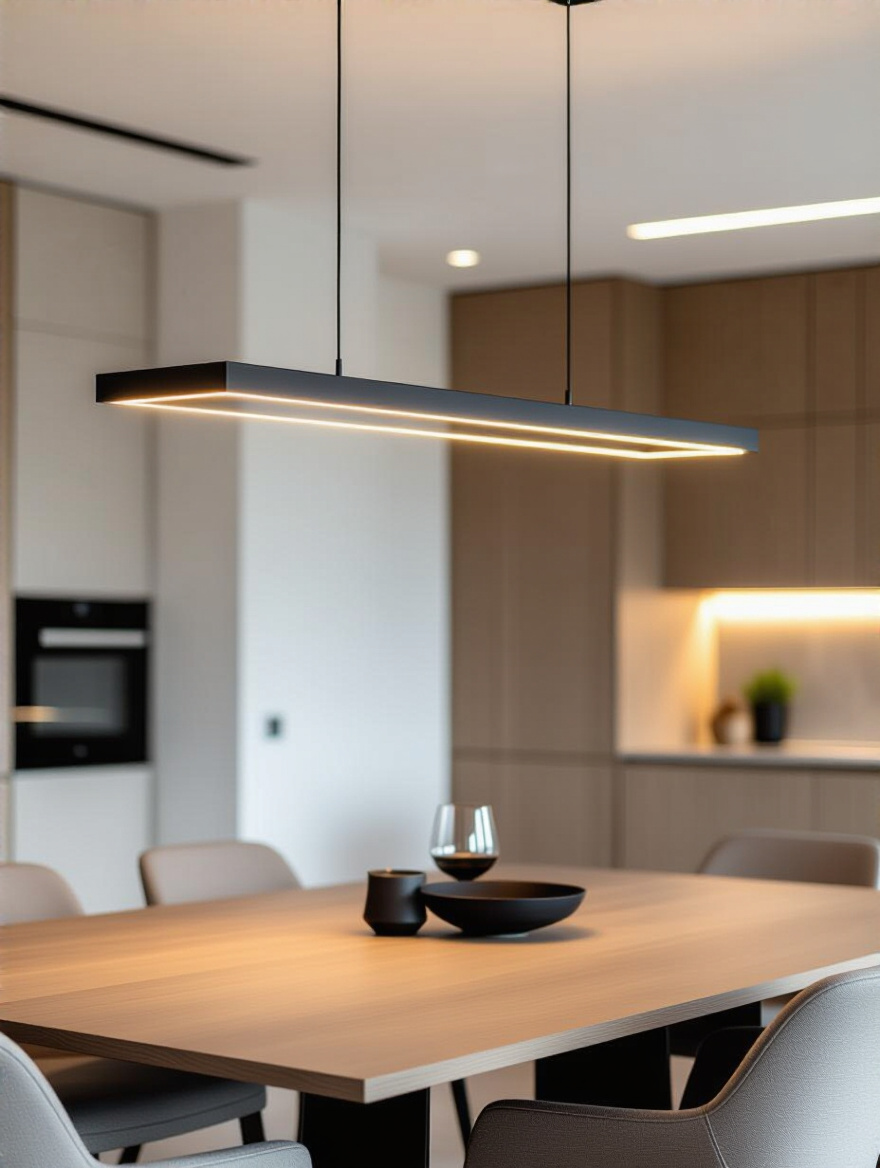
I learned this the hard way with a family who had a single round pendant over their 8-foot table. The ends of the table were so dim, the kids would crowd into the middle to read, leaving a third of the table unused. We swapped it for a simple, 48-inch linear fixture, and it completely reclaimed the space. Suddenly, there was room for everyone. It defined the zone without building walls, making it perfect for open-concept homes.
But what if you want less function and more poetry?
Sometimes, a room needs a statement—a single, beautiful object that starts conversations and inspires a sense of wonder. A sculptural pendant is a beautiful old tome on display, a piece of art that also happens to cast light. It declares the dining space as a place of significance. But the common mistake is choosing one that is only beautiful and forgetting its primary job.
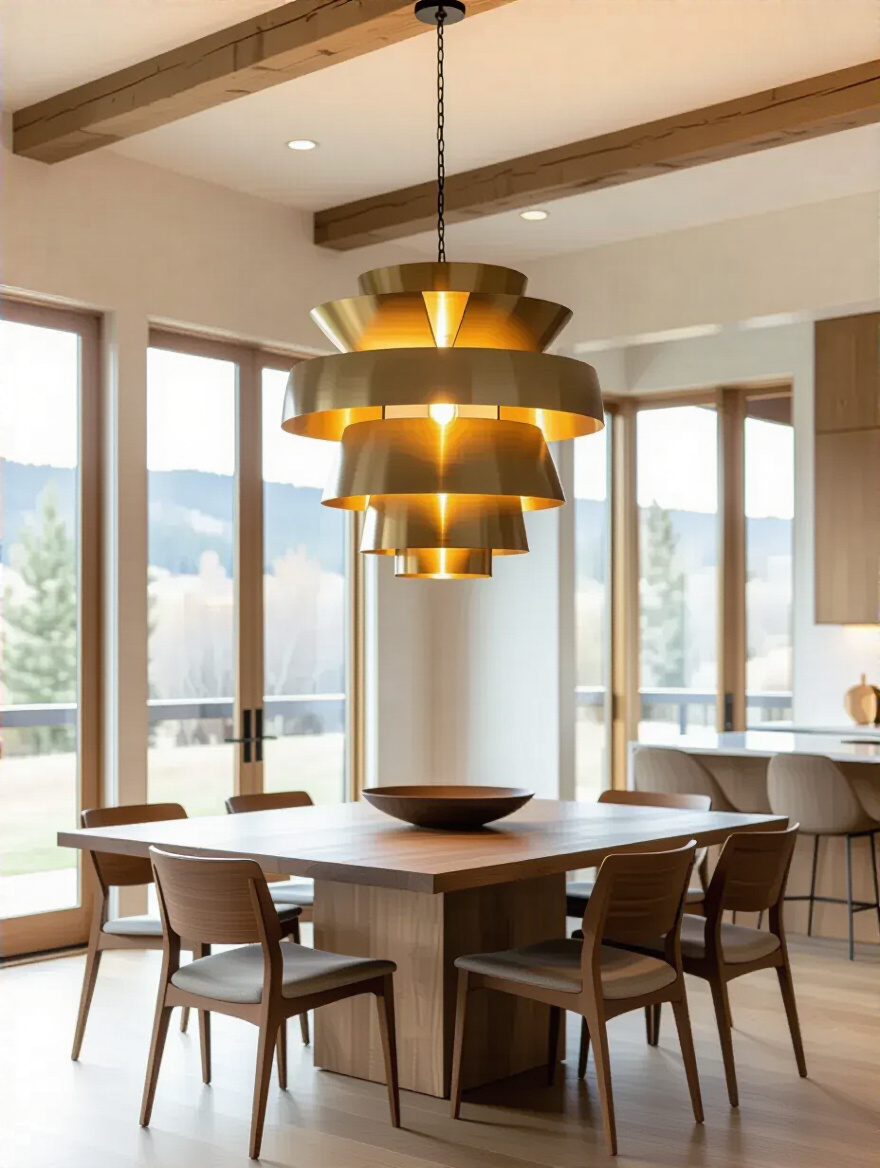
Make sure your work of art actually illuminates the table. Some of the most stunning designs cast light upwards or outwards, which is lovely for ambiance but terrible for reading a menu or a book. Look for a design that directs at least some light downwards. And always, always put it on a dimmer. That way, its artistic form can be the star when you want mood, and its light can be the workhorse when you need to see.
From the bold to the clandestine, let’s look at a subtler tool.
LED strips are the secret weapon of the lighting world. When done right, you don’t see the source; you only see its effect. It’s like highlighting a key passage in a book, drawing attention to what matters. For a room with built-in bookshelves, a buffet, or a coved ceiling, this is magic. It adds depth and makes the space feel more expansive and professionally designed.
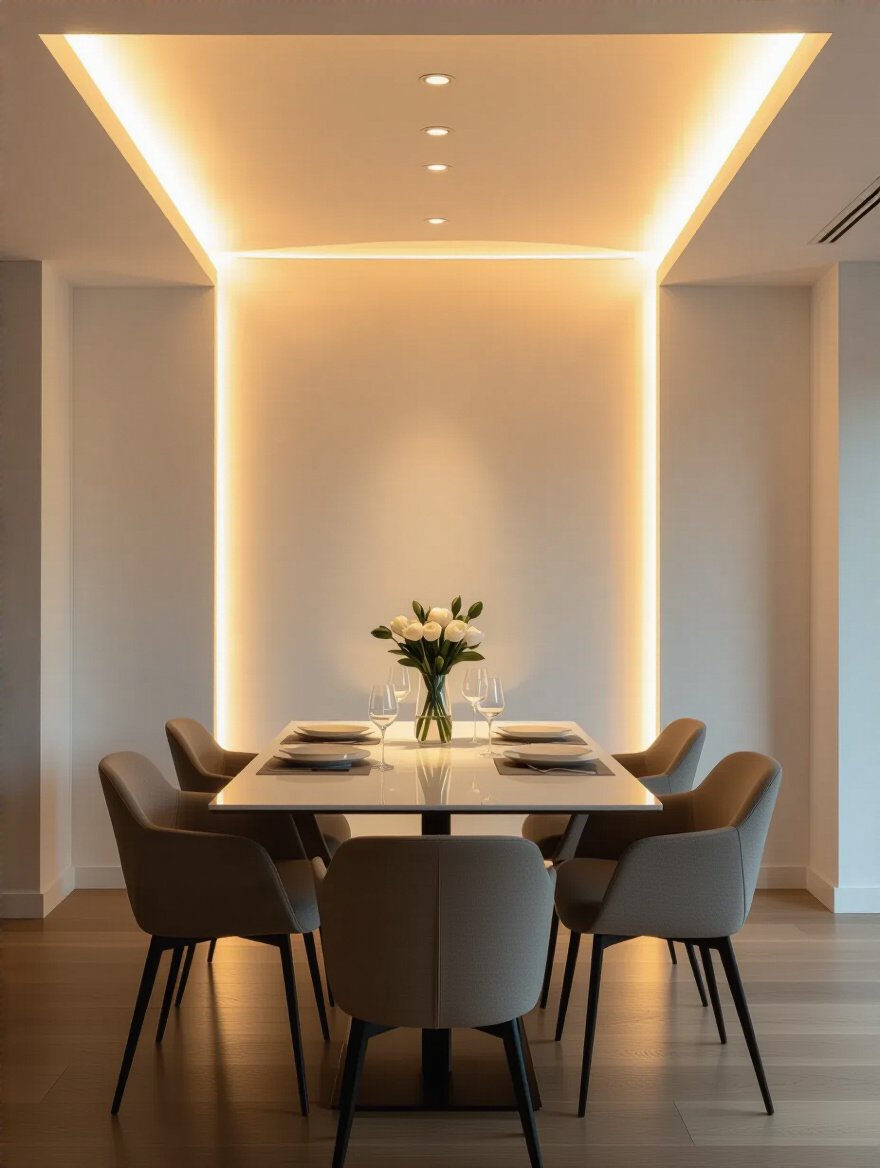
The BS everyone falls for is just sticking an exposed LED strip under a cabinet. The result is a series of harsh, distracting dots. The shortcut you need to know is to always use an aluminum channel with a frosted diffuser. It costs a bit more, but it transforms those garish dots into a smooth, continuous line of light. I use them inside bookshelves to backlight the books, giving the entire collection a subtle, ethereal glow.
Next, let’s talk about adding a sensory layer.
A room filled with surfaces of the same texture can feel flat and sterile. Lighting is the perfect place to introduce contrast. A fixture that combines warm wood with cool concrete, or smooth glass with raw metal, adds a layer of sensory interest. It’s like the satisfying feeling of running your hand over different book bindings—smooth leather, rough linen, crisp paper. It just makes the experience richer.
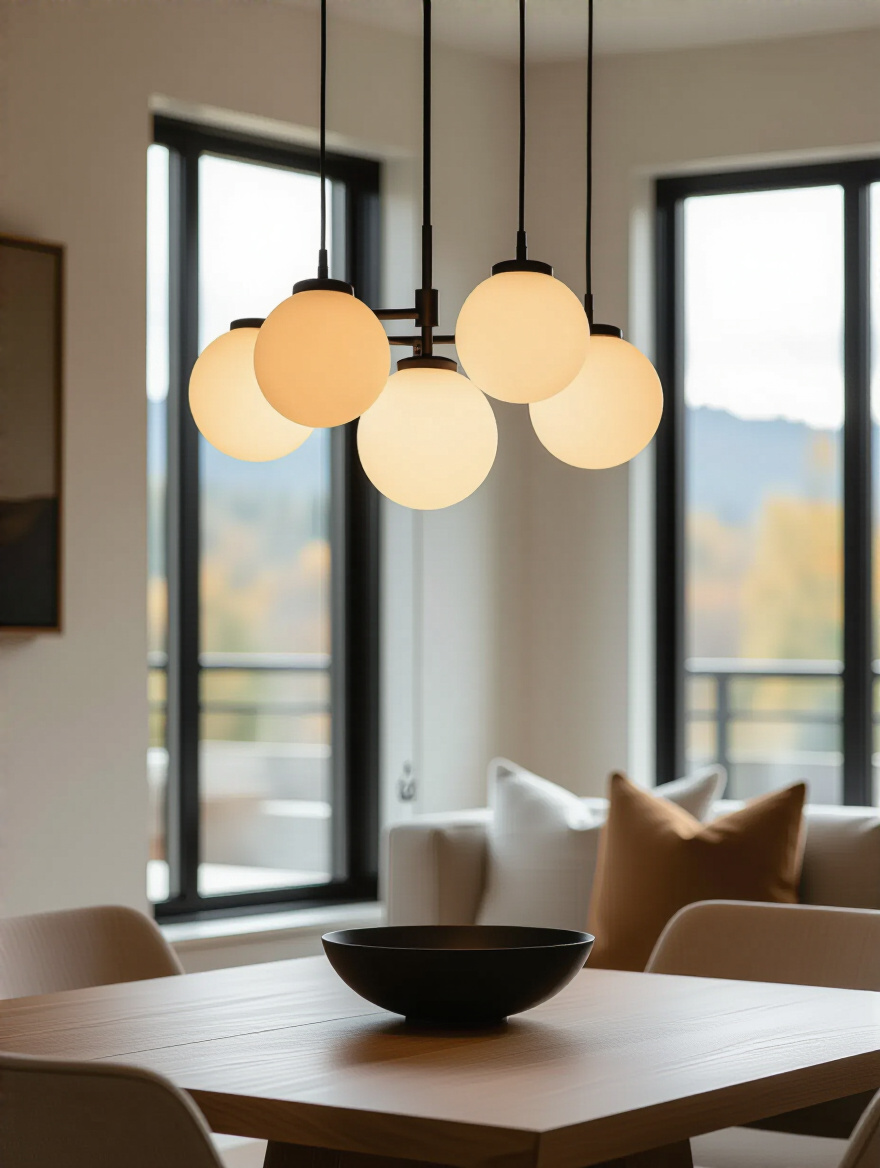
The key is to let one material be the anchor and the other be the accent. Look at your room’s dominant materials. If you have a wooden table and floors, a fixture with metal and glass can provide a needed counterpoint. I remember a client’s all-white dining room that felt a bit like a hospital. We introduced a single pendant of dark wood and blackened steel. It didn’t just light the room; it gave it a soul.
Let’s move from textural complexity to structural clarity.
There is a profound beauty in order and structure. Geometrically inspired fixtures—with their clean lines, cubes, and interlocking forms—are perfect for a space dedicated to clear thinking and modern aesthetics. They act as a piece of sculpture, a visual anchor that brings a sense of intentionality and intellectual rigor to a room.
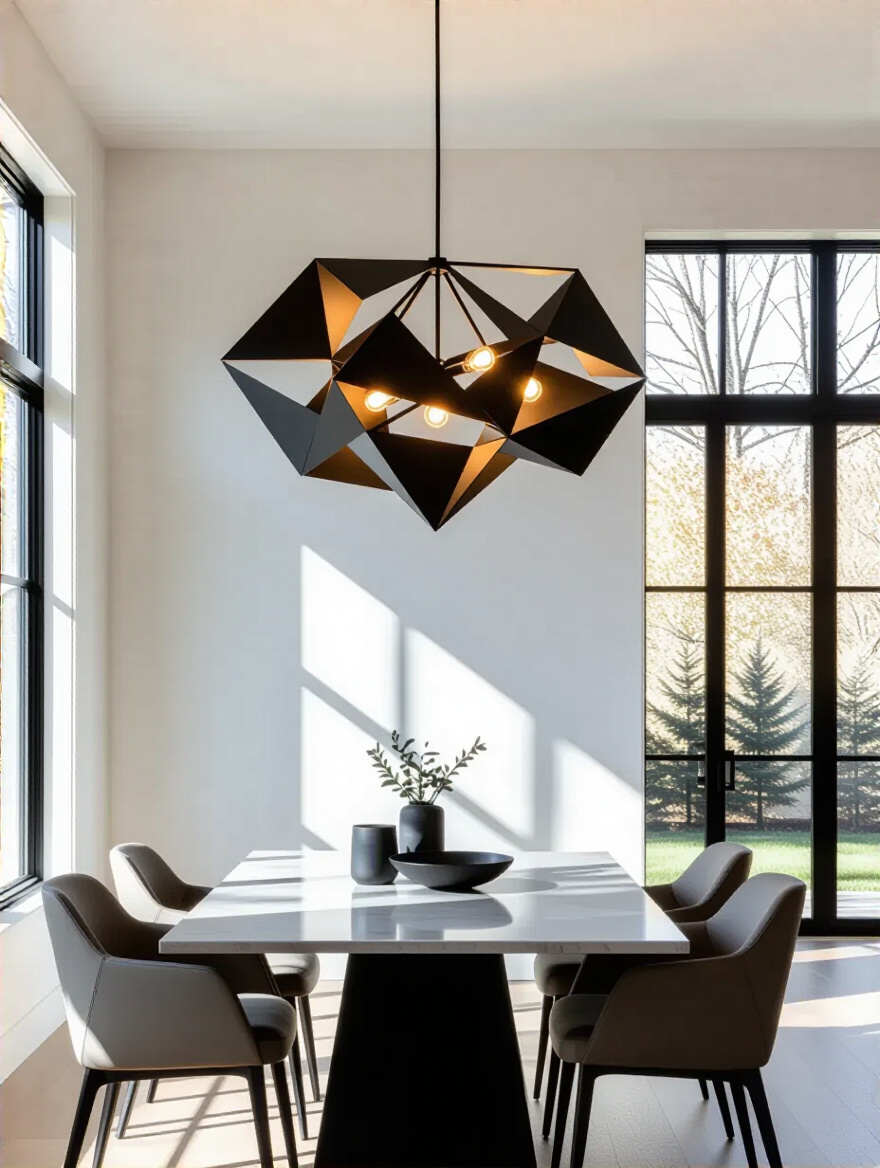
These fixtures are all about the play between form and the empty space around it. An open-frame cube or polyhedron doesn’t just hang there; it sculpts the air. A common mistake is to choose one that is too complex for the space, creating visual noise. Often, the simplest forms are the most powerful. Pair a bold geometric light with a dimmer, and you can control its presence, allowing its dramatic shadows to become part of the evening’s ambiance.
You can have the most beautiful fixtures in the world, but if they are placed poorly, the composition will fail. This is about taking your individual instruments—your lights—and conducting them into a harmonious symphony of illumination.
This feels so obvious, but it is my number one pet peeve. An off-center light fixture is a visual itch you can’t scratch. It unbalances the entire room. Your dining table is the center of this small universe; the primary light source must be aligned with it. This is not about the center of the room; it is about the center of the table. They are often not the same.
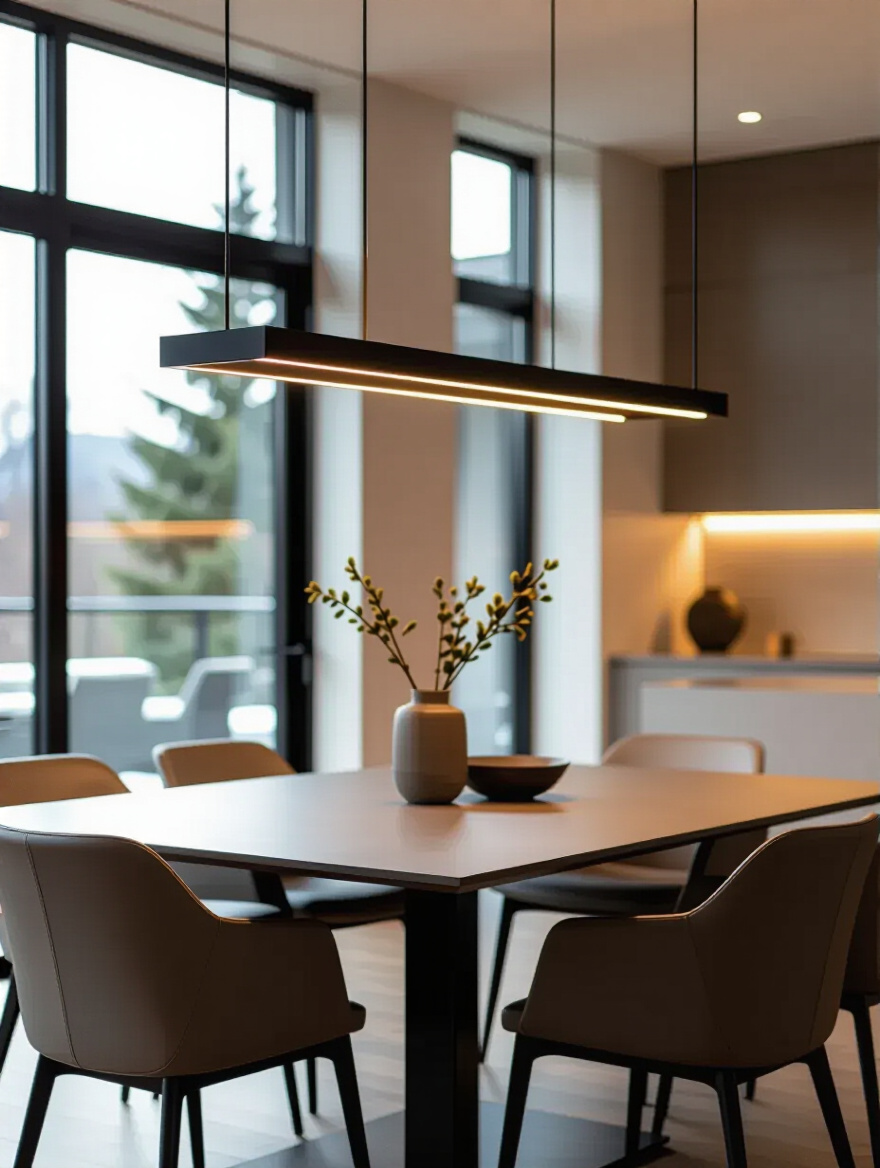
If your ceiling’s electrical box is in the wrong spot (a common problem), don’t just live with it. A good electrician can move it for a reasonable cost, and it’s the best money you’ll spend. If that’s not an option, a “swag hook” is your friend. It allows you to hang the fixture from the hook, which is centered over the table, and run the chain or cord over to the electrical box. It’s an honest, classic solution to a common problem.
With our anchor in place, it’s time to build the other layers.
A single overhead light creates a “stage” effect: a bright pool of light in the middle and gloomy, shadowy corners. This is called the “cave effect,” and it’s deeply uninviting. Layered lighting is the cure. Think of it as an orchestra, not a foghorn. You need three sections: Ambient (the general, room-filling light), Task (the focused light for your main work, i.e., the table), and Accent (the highlights on art, books, or architecture).
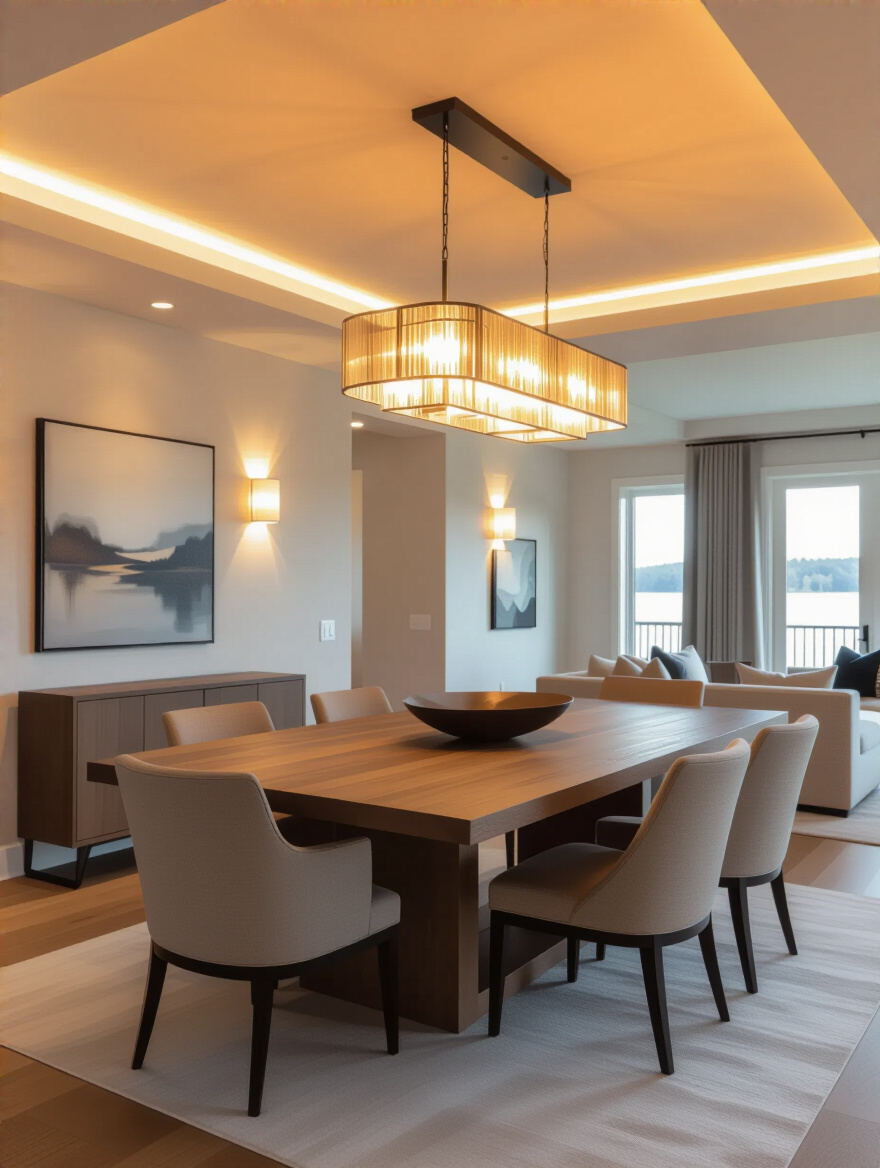
This is the principle that separates good lighting from great lighting. Your chandelier is the task light. Recessed lights or a flush mount can provide the ambient fill. And wall sconces or a picture light can be the accent. I had a client whose dining room felt small and claustrophobic. We added two simple sconces on the far wall. Instantly, the eye was drawn across the room, creating a sense of depth that made the space feel twice as large. Each layer should have its own control, preferably a dimmer.
Let’s zoom in on one of those key layers.
Wall sconces are the unsung heroes of lighting design. They bring light down from the ceiling to a more human level. They wash walls in a soft, welcoming glow, eliminating shadows and making a room feel wider and more gracious. They create those intimate pools of light reminiscent of an old-world library or a quiet gallery, inviting you to lean in.
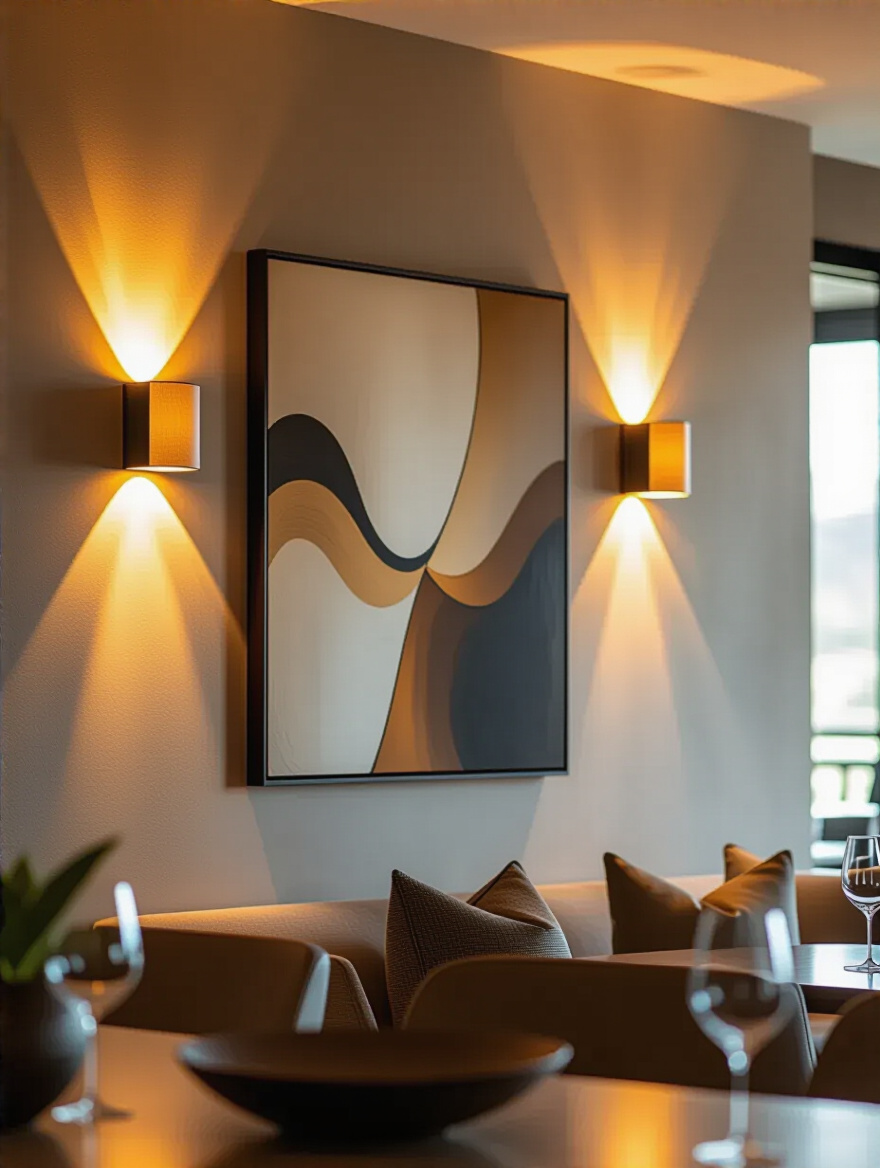
The trick is placement. Hung at roughly eye level (about 60-66 inches from the floor), they feel natural and don’t create glare. Use them to flank a piece of art, a sideboard, or a doorway. I particularly love using up/down sconces, which cast light both upwards and downwards. This creates a beautiful architectural effect, drawing attention to the height of the room while still providing a soft, localized glow.
Now for the workhorses hiding in the ceiling.
Here’s some real talk: most recessed lighting is terrible. It’s often installed as a grid of “can lights” that blast the room with harsh, glaring light, creating scallops on the wall and turning your ceiling into Swiss cheese. People think of them as general lighting, but that’s a mistake. They are precision tools. Their job is to put light exactly where you need it, without drawing attention to themselves.
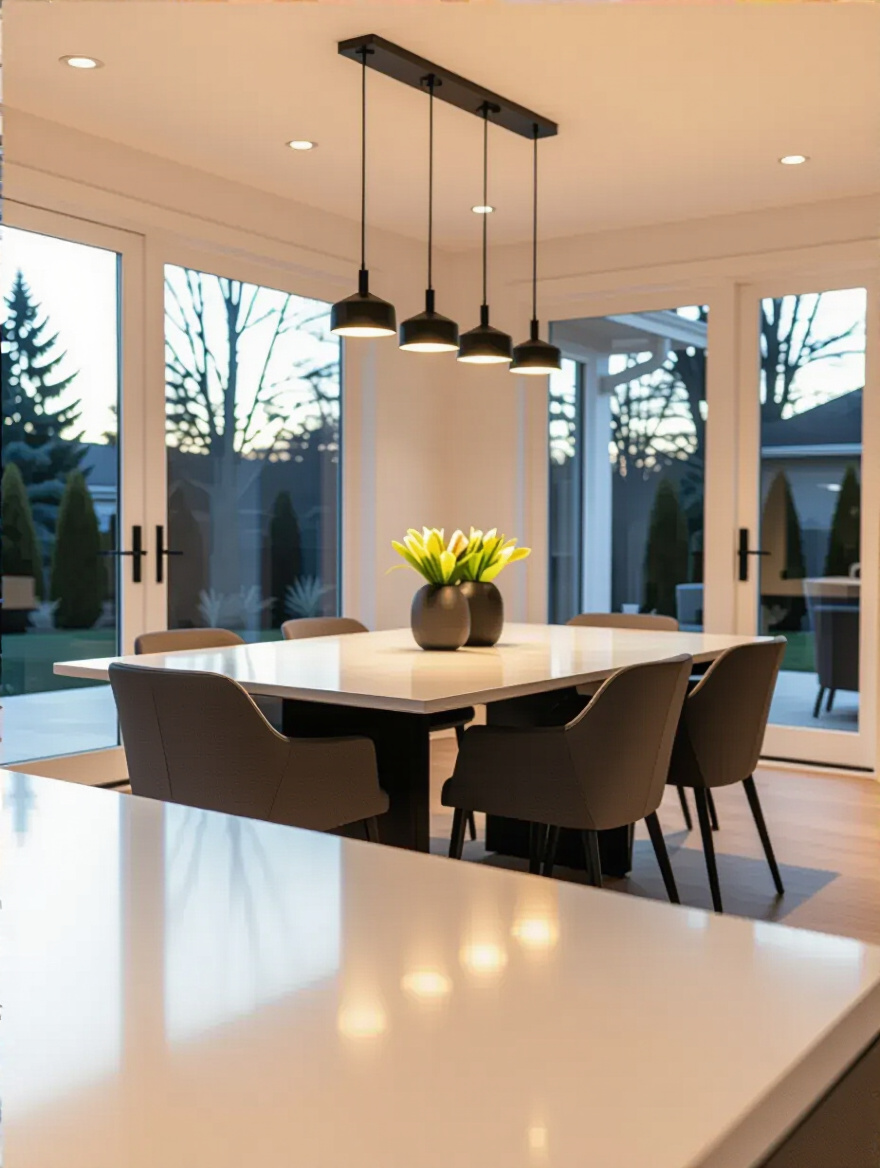
For a dining room, use recessed lights to wash the walls, not the center of the room. This makes the space feel larger and provides soft, indirect ambient light. If you must use them over the table, use as few as possible and choose “deep baffle” or “regressed lens” models. This means the light source is set far back inside the housing, so you see the light on the table, not the blinding glare of the bulb in the ceiling. This is non-negotiable for comfortable reading.
And what about the other functional zones in the room?
The sideboard or buffet is often a secondary library—a place for cookbooks, serving platters, and decanters. This functional zone needs its own dedicated light. Fumbling in the shadows to carve a roast or pour a drink is inefficient and just plain annoying. A little bit of focused light here makes entertaining so much more fluid.
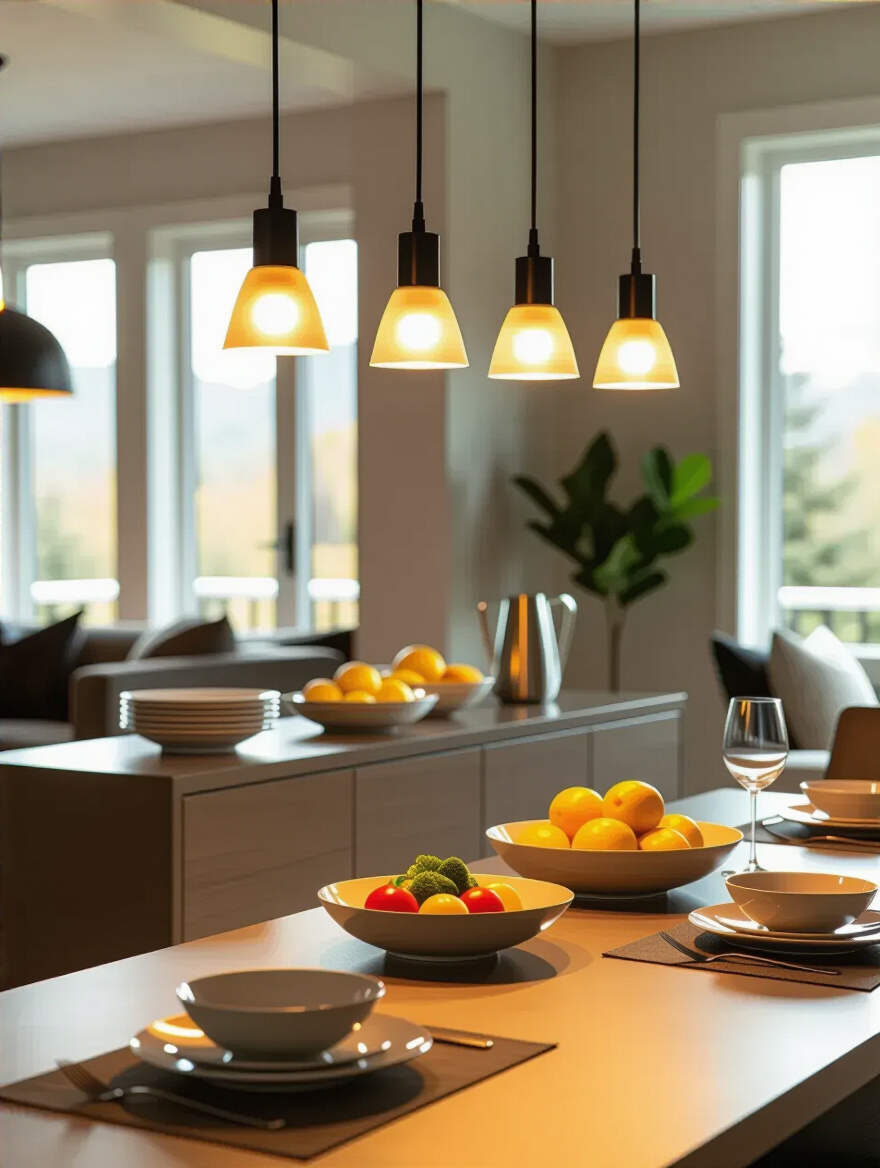
My favorite shortcut for this is to use a pair of small, elegant table lamps on the sideboard. They provide perfect task lighting and add a warm, decorative layer. Alternatively, a few discreet, aimable recessed lights (often called “pinhole” or “eyeball” lights) can be directed right onto the work surface. This creates a professional, layered look and signals that this space, too, is a place of purpose.
You’ve selected your instruments and arranged your orchestra. Now, it’s time to pick up the conductor’s baton. Modern controls are what allow you to effortlessly shift the room’s entire mood from one moment to the next.
If you take only one piece of advice from this entire conversation, let it be this: put every single light in your dining room on a dimmer. It is the single most cost-effective, high-impact upgrade you can make. It’s the volume control for your room’s atmosphere. Without a dimmer, a light has only two settings: off and LOUD.
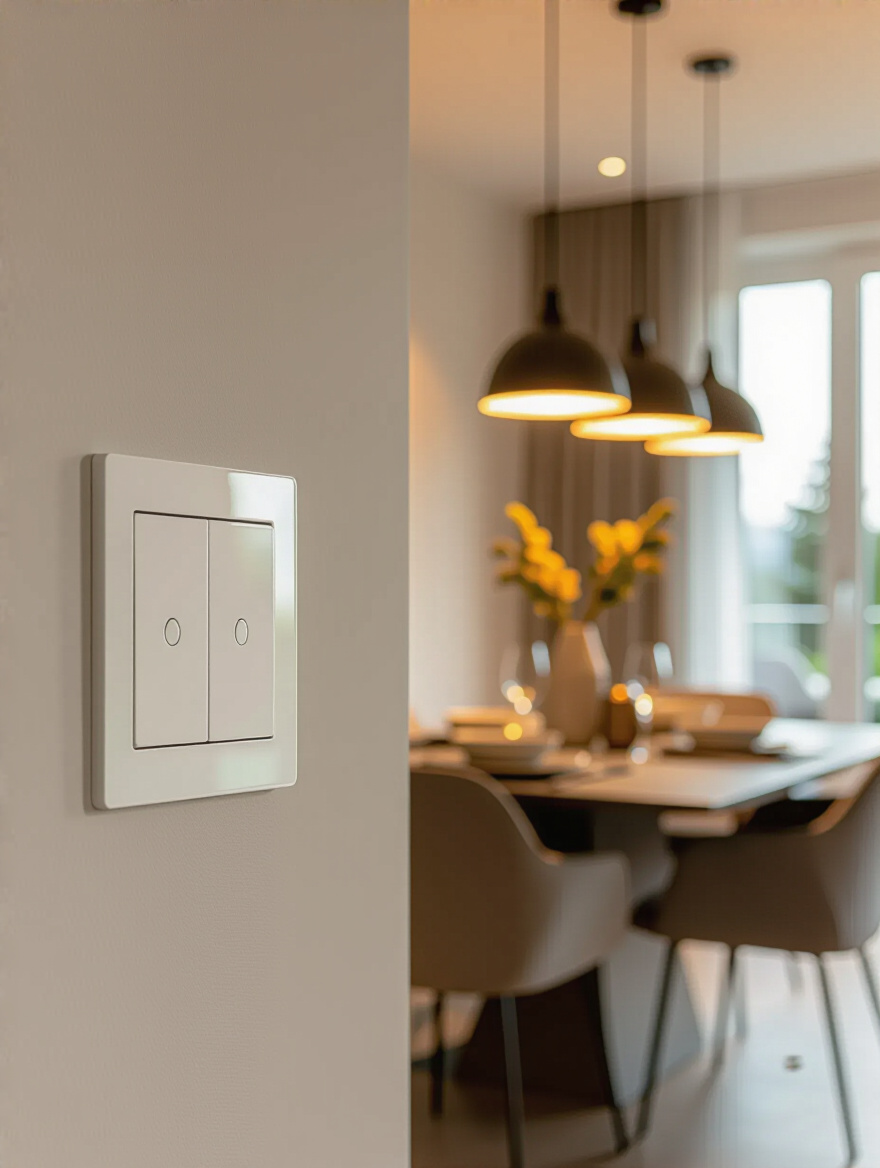
This isn’t just for mood. It’s for function. A bright 100% is great for cleaning or projects. A gentle 70% is perfect for a lively family meal. A warm 30% is ideal for lingering conversations after the plates are cleared. The mistake people make is buying cheap dimmers that cause LEDs to flicker or hum. Invest in a quality CL (CFL/LED) dimmer from a reputable brand like Lutron. It’s a small detail that makes a world of difference.
But why stop at a simple switch?
This used to be the stuff of science fiction; now it’s wonderfully accessible. Smart lighting isn’t a gimmick. For a multi-functional space, it is the ultimate tool. It allows you to create “scenes”—pre-set lighting recipes you can call up with the tap of a button or a voice command. Think of them as bookmarks for your room’s many lives.
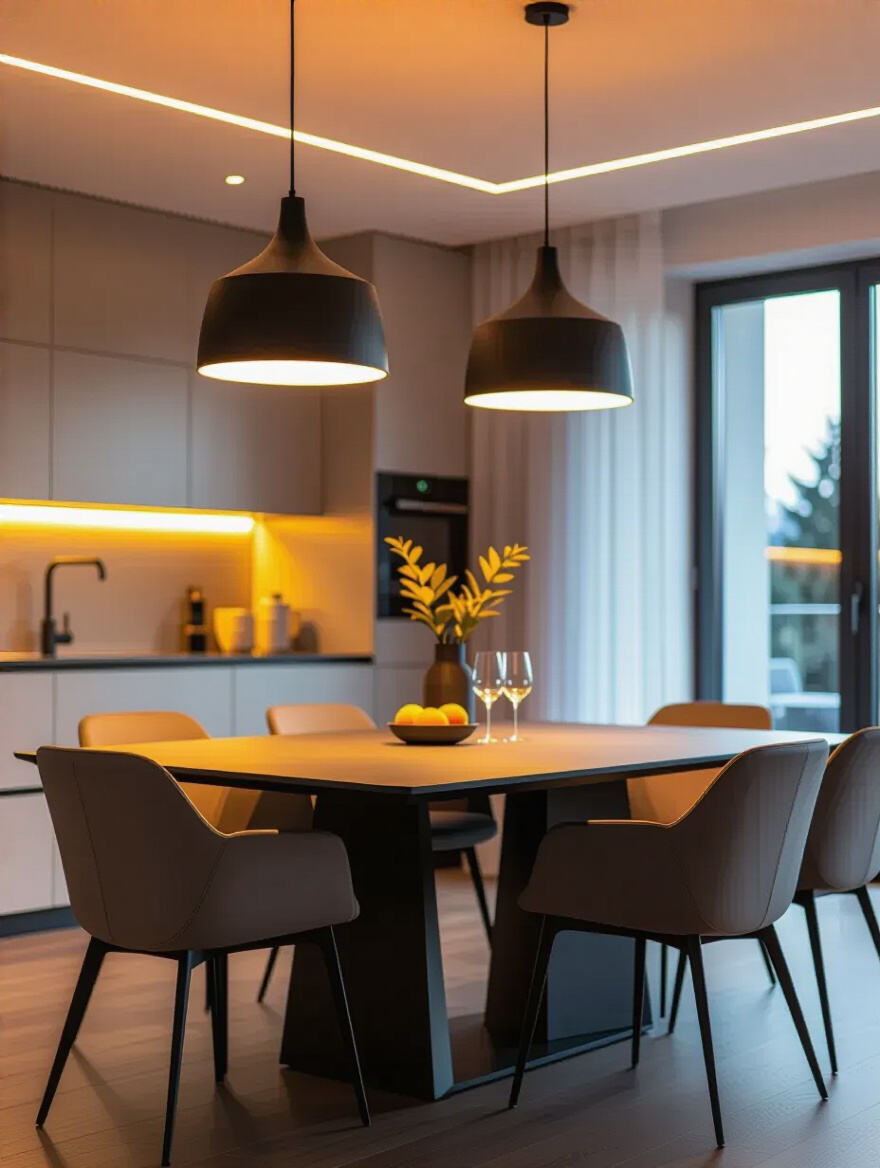
I worked with a family who set up three scenes: “Homework” (main light at 80%, cool temperature), “Dinner” (main light at 50%, warm temperature, sconces at 20%), and “Relax” (all lights at 10%, very warm glow). They no longer had to fiddle with three different dimmers to change the mood. One command, and the room completely transformed. This is how you make a space work for you.
And finally, the simplest step of all.
You don’t always have to buy a new fixture to get a new look. Sometimes, the most profound change comes from simply changing the bulbs. If you have an old chandelier you love, but its incandescent bulbs cast a harsh, energy-guzzling light, switching to high-quality dimmable LEDs is a revelation.
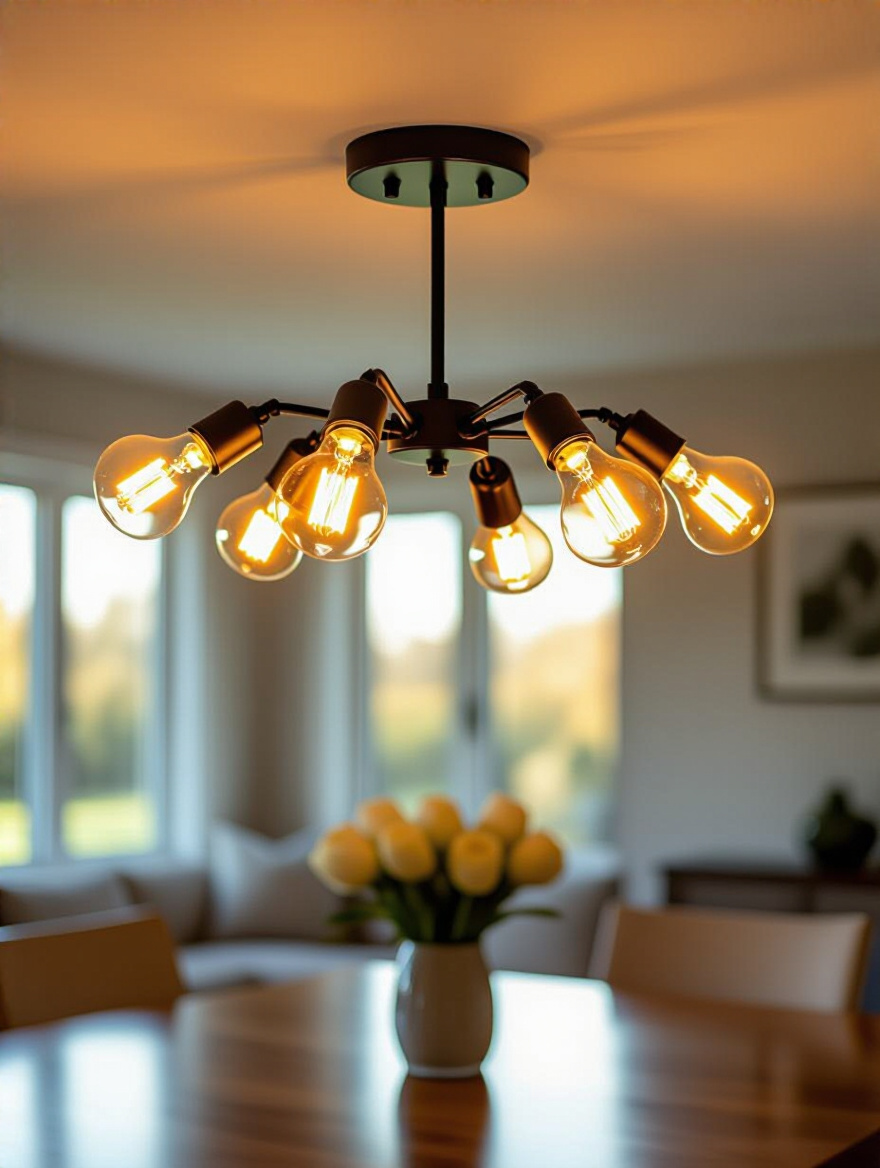
You can instantly change the entire feeling of the room. Want that warm, candle-lit look? Choose a 2200K or 2700K “filament” style LED. Need better light for reading? A 3000K bulb will feel cleaner and brighter. This simple swap saves money, reduces waste, and gives you access to a palette of light quality that simply didn’t exist a decade ago. It’s the easiest, fastest, and most responsible way to start your lighting journey.
So, you see, lighting your dining room—your home’s scriptorium—is not about picking a pretty chandelier. It’s an act of deep thoughtfulness. It’s about creating a sanctuary that can support quiet study, boisterous debate, intimate meals, and the simple, sacred act of sharing a space with people you care about. It’s about layering light like you layer ideas, building a space that is flexible, comfortable, and a true reflection of the life lived within its walls.
Don’t be paralyzed by the options. Start with one thing. Install a dimmer. Change your bulbs. Measure your table and dream about the right fixture. A well-lit space is a gift you give yourself and your family every single day. Your dining room is waiting. It’s time to let it shine.